This blog about Sculpture is the third of three blogs by Art & Design Consultant Paul Carney. Part 1 is on Drawing and Part 2 on Painting. Continue to read below to find out about Sculpture and use the accompanying Activity Cards to enhance Sculpture in your classroom.
Gross and Fine Motor Skills
I’m going to begin this blog post by referring to my two earlier posts; painting skills and drawing skills. In them, I explained that most school art is heavily reliant on fine motor skill development, which favours girls abilities over boys, who tend to excel in gross motor skills.
Gross motor skills are movement and coordination of the arms, legs, and other large body parts, used in running, crawling, and swimming etc. Fine motor skills involve smaller movements that occur in the wrists, hands, fingers, feet, and toes. There are four kinds of fine motor skills; pinching, holding, concentration, and hand-eye coordination. Most school-based art and design is centred around fine motor skills. Children that have experienced lots of craft activities at home develop good hand-eye coordination. Those that have motor difficulties or impairments, or who have not been given opportunities like this from an early age might struggle. They might know what they want to achieve, but not be able to realise their intentions as well as they would like. They simply might not have any relative prior experiences, and so not understand what is being asked of them.
Developing skills through Sculpture
Sculptors use skills & techniques including cutting, joining, shaping, moulding, forming, bending, folding, stitching, welding, bolting, tying, weaving, and balancing to construct sculptures from a wide variety of materials and found objects. In this way, many of the tools and techniques we use in Design Technology overlap with those we need for sculpture. As a former Design Technology teacher myself, I can’t see any reason why sculpture cannot overlap with some of the primary DT requirements. The skills being utilised in both disciplines are often arbitrary.
Given the right opportunities however, sculpture is a great place to develop gross motor skills. Through sculpture we can bend wire, carve soap or cut, shape and form wood. We can also model materials on larger scales. We could make kinetic sculptures or make sculptures that involve our whole bodies and senses. The more ways you can involve whole arm and body movements, the more you will involve gross motor skills. Simply getting the pupils to stand up while working is a great way to do that. Pupils will automatically incorporate whole body actions to their work.
Sculpture Skills
Some of the most common skills pupils should learn when making sculptures are to:
- Measure – mark out, and score precisely.
- Cut – using scissors, knives, to engrave, carve, and hollow.
- Shape and form – fold, bend, mould, model, roll, pinch, press, knead, scrape, pour, and squash.
- Join and combine – stick, glue, tape, knit, sew, weave, and twist.
- Construct – build, strengthen, and assemble
- Finish – prime, paint, surface, texture, appearance, and decorate.
All of these are processes we learn within larger projects, but they are what Ofsted call components knowledge – they are vital building blocks to be able to access higher level making skills. Weaker teachers simply assume pupils know how to do these skills automatically. Good teachers will isolate and signpost the teaching of them. They’ll demonstrate and model how to do them, perhaps illustrate them with posters, flash cards, handouts, or drawings in sketchbooks. They’ll watch pupils doing them and patiently reinforce them again and again to compensate for those that find learning them difficult. If there are gaps in your knowledge regarding these skills yourself, then it’s important to ask colleagues for help in learning them.
To find out more about sculpting why not take a look at the Activity Cards below, and try the techniques and resources suggested.


Sculpture is, I think, one of the most rewarding and engaging creative activities we do in school. Yes, it’s specialist, messy, and expensive but it’s also extremely good fun, challenging and complex. It requires pupils to plan, to think in both two and three dimensions, to experiment, to problem solve and collaborate. It develops both our fine and gross motor skills, whilst stimulating our imaginations and creativity. Personally, sculpture was always one of the most exciting activities I used to teach. But it was also one of the best things I did as a student too. Just try to make sure you don’t spend 5 weeks on planning an activity and 1 week making it. Try to just get stuck into making and learn through and within the medium. Your pupils will love you for it and they’ll learn more.
Thank you to Paul Carney for writing this blog.

Paul Carney
Education Consultant
Email: admin@paulcarneyarts.com
Twitter: @PaulCarneyArts
Facebook: Paul Carney Art
Biography
Paul is a nationally recognised art & design consultant having delivered specialist art CPD in schools, colleges, galleries, and Universities across the UK and for the UK’s leading art education providers; including the National College, Kapow Education, Access Art, NSEAD, BBC Bitesize, Mary Myatt and Osiris Education.
Paul is a published author of two books: Drawing for Science, Invention and Discovery and his latest book Drawing to learn anything. He is also a practicing professional artist and designer.
Paul runs his highly successful art website: paulcarneyarts.com that provides high quality teaching resources and advice to teachers around the world. He has over twenty years teaching experience at Primary, Secondary and post-16 levels of education, is an Advanced Skills Teacher, ex-Subject Leader for Art and was a member of the DfE Expert Advisory Group for Art and Design.
In addition to this he was a member of the NSEAD Curriculum Writing Group that wrote the ‘Framework for Progression, Planning for Learning, Assessment, Recording and Reporting 2014.’


